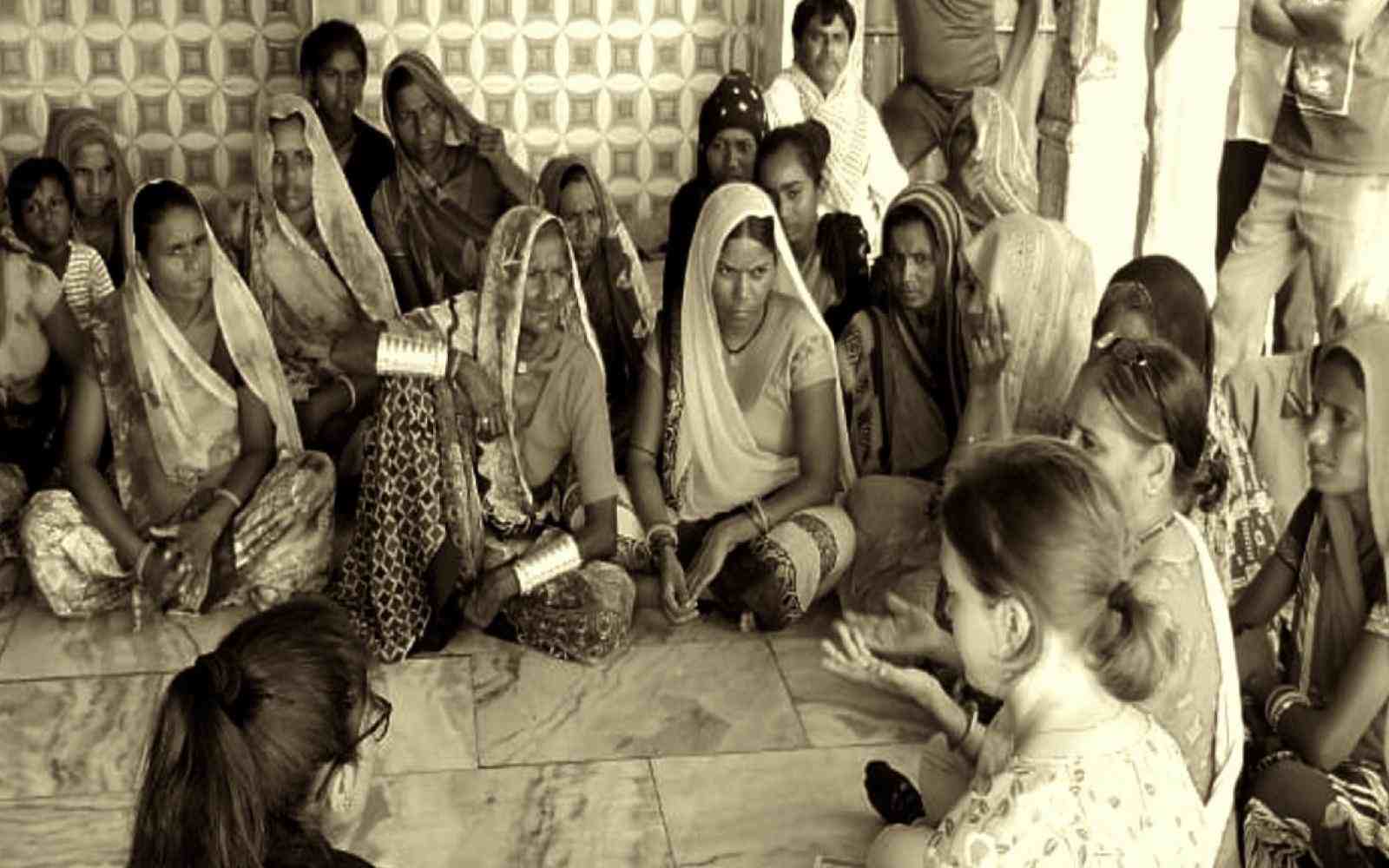The Story of Bhungroo: How a gender centric approach is tackling water shortage in rural India

While Biplab’s initial work in 1995 was intended to focus on drinking water alone, he quickly realized this wasn’t a need of the hour among locals- with wide-spread food insecurity, water logging and droughts- he needed to adapt in innovative ways to counter the more immediate challenges to these looming concerns. Recounting his experience of starting out in the sector nearly three decades ago, he says, “innovation needs to have a bottom-up approach and is useless if inaccessible to the people who need it the most”. Biplab Ketan Paul, Ashoka Fellow and Director of Naireeta Services Private Limited (NSPL) along with co-founder, Trupti Jain, recognise that innovation needs to definitively be geared towards fixing a problem, and its adoption is contingent to its necessity.
On a long list of concerns, ranging from farmlands with high salinity, industrialisation-fuelled water use to rampant mismanagement, and contamination, water shortage takes on many faces for the farming communities, and it is an issue that they are generationally born into. Instead of educating communities of a problem they are exceedingly well-versed in, Naireeta focussed its efforts on demystifying the method to tackle it. With almost thirty years of successes and failures to outline their work, Biplab is most sceptical of a one-size-fits-all approach to his work. Explaining, “technology cannot remain sacrosanct, but must evolve with existing problems to address them”, Biplab has played a chief role in altering the water management landscape with the deployment of ‘Bungroo’ which has more than 100 designs to cater effectively to varying soil topography.
Bhungroo is a system that allows for water to be stored underground and made available for cultivation during dry-spells and winter months, where water would previously be extremely hard to come by. The model therefore allows farmers to cultivate in three cropping cycles, greatly enhancing the supplementary incomes of families in dry regions. Apart from the ability of this system to transform drought-stricken areas, the most notable aspect of the model, however, is its focus on women, and more specifically- poor and marginal women.
Despite forming an integral and indispensable part of farming, women enjoy little to no freedom so being sensitised to Bhungroo’s technical operations, affords them social capital in the form of knowledge and a say in local decision making. As Biplab explains, “Individually these women have no capital, their social capital lies in the collective group”, as the model scouts to serve the most disenfranchised women in any given area and presents an opportunity for economic and social freedom of one woman to be shared among the other five. When probed further on how this model is presented to the community, Biplab speaks at length about contextualising the concepts in a colloquial way, he further illustrates “if you have five children, then do you leave one out?, similarly in 1-5 ownership of Bhungroo, everybody must be included, its everyone’s responsibility”. As one bhungroo owner concurs, “it is always better to organise rural women members and enable them to learn how to self-help as well as help peer groups. But as soon as these women start earning and making decisions in those fields, which are considered male bastions, they face oppositions from various quarters and that is the time where peer support is essential.”
Naireeta uses various poverty ranking indices to identify the poorest women and verifies the proximity of selected women to one another so that it is feasible for one Bhungroo to be owned and utilised by five women. Along with this, the selection of land itself is a question that requires intense mulling over, as women rarely ever own land, and any land that is available needs to be assessed to determine its viability to erect the water management structure. Factors such as the holding size and slope of land, the quality of soil and seasonal variations, all become important aspects to be considered when it comes to erecting Bhungroo. Nevertheless, once it is set up and maintained, the economic and social benefits are manifold.
“First time I have freed our land from water logging in spite of incessant rains. First time our whole family was sure of food for whole year and we were able to give food to others! Besides that, we have also earned INR 41,700 from our monsoon crops. This was a dream for us”. Lakhiben Thakore, National Rural Livelihoods Mission (NRLM) member relays her experience within a year of installing Bhungroo.
When Biplab started out, it was near impossible to work with women and much less have a system that hinges on it. It eventually happened that the men soon deserted his endeavour, but the older women took on a proactive role. The latter felt that a setback such as the one Biplab faced and recognised was no more than a blip, and enthusiastically continued participating in larger numbers. Their understanding of failure transcended Biplab’s understanding of failure at the time, as for many of these women, failure was an inextricable part of living life in rural India. This much needed perspective and being privy to their own struggles on a societal level, has made it into the core workings of Naireeta and marked a shift into the women-centric model we see today. Adding to this is the notable guidance and direction of Trupti Jain in combatting problems on the ground through continuous innovation and prolonged leadership from the women in the community.